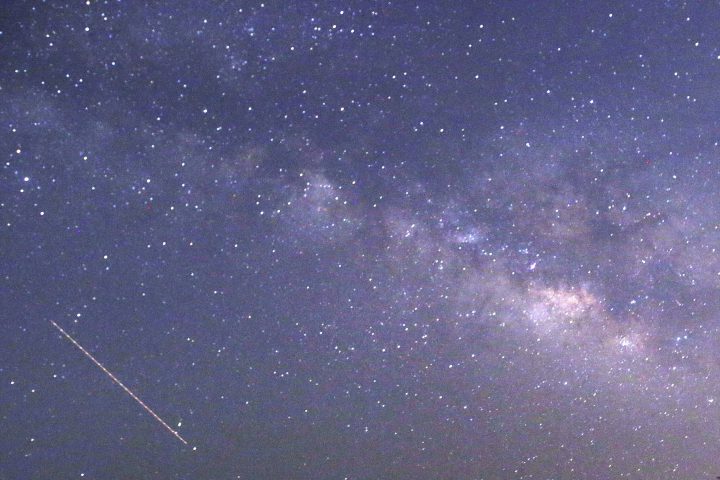One of the oldest known meteor shower is set to light up the sky this month.

The Lyrid meteor shower takes place between April 16 and 25, and will likely peak the morning of April 22. Those hoping to catch a glimpse of the celestial show should go outside just before dawn Sunday to catch the most activity.
According to EarthSky, the waxing moon isn’t expected to get in the way. But this particular meteor shower tends to be unpredictable.
WATCH: Geminid meteor shower lights up skies around the globe

What to expect
Viewers can expect to catch about 10 to 20 Lyrid meteors an hour — if they’re watching under a clear, dark sky.
The Lyrids are known to be fast and bright meteors that can often surprise spectators. In many previous years, the shower has been notably more active than expected.
Lyrids are also known to leave “glowing dust trains” in the sky, but viewers have to be on the look-out to catch them as they only last a few seconds.
WATCH: Perseid meteor shower highlights

History of Lyrids meteor shower
The Lyrids meteor shower has been observed for about 2,700 years, according to NASA, and is one of the oldest known meteor showers.
Its first recorded viewing dates back to 687 B.C.E.
READ MORE: What to know about the Orionid meteor shower
How to watch
Those living in the Northern Hemisphere get the best view of this meteor shower. Canadians who want to witness it should go outside, away from city lights, after the moon sets and before dawn.
NASA advises spectators go outside bundled up, and lie flat on their backs for several minutes before the start of the shower so their eyes can adjust to the darkness.
While the meteors will appear to come from a point in the sky that is home to the small constellation Lyra, it’s not important to look in a particular direction of the sky.
WATCH: Perseid meteor shower lights up sky

The next meteor shower
If viewers aren’t able to catch the Lyrid meteor shower, they don’t have to worry too much.
The next one, called Eta Aquarids meteor shower, is set to begin on April 19 and will last until May 28. Its peak will occur on the night of May 5 and last until May 6.
- What is a halal mortgage? How interest-free home financing works in Canada
- Capital gains changes are ‘really fair,’ Freeland says, as doctors cry foul
- Budget 2024 failed to spark ‘political reboot’ for Liberals, polling suggests
- Peel police chief met Sri Lankan officer a court says ‘participated’ in torture




Comments